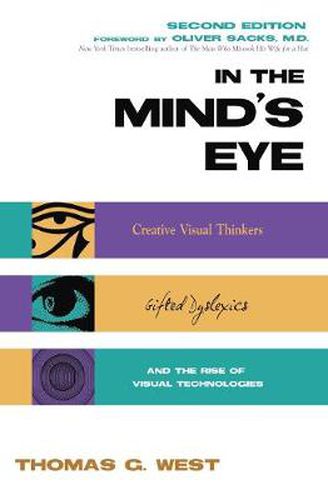Readings Newsletter
Become a Readings Member to make your shopping experience even easier.
Sign in or sign up for free!
You’re not far away from qualifying for FREE standard shipping within Australia
You’ve qualified for FREE standard shipping within Australia
The cart is loading…






The computer-generated information superhighway could launch a new renaissance of creativity for millions of visual thinkers! Some of the greatest minds in politics, science, literature, and the arts experienced undetected learning disabilities that stopped them from assimilating information the same way as their peers. Some of our most original intellects Albert Einstein, Thomas Edison, Lewis Carroll, and Winston Churchill relied heavily on visual modes of thought, processing information in terms of images instead of words or numbers. In the Mind’s Eye profiles gifted individuals who used non-traditional methods in their work as it explodes many myths about conventional intelligence and charts new vistas for today’s computer visualisation technologies.Thomas G. West examines the learning difficulties experienced by these people and others, and how recent neurological research shows an association between visual talents and verbal difficulties. In the Mind’s Eye probes new data on dyslexics to see how computers enhance the creative potential of visual thinkers, as well as interactive computer applications to all levels of education and work. Updated with a new preface, epilogue, and expanded notes, this volume could be the clarion call for educators and corporations to mine this untapped resource of highly creative talent in our midst.
$9.00 standard shipping within Australia
FREE standard shipping within Australia for orders over $100.00
Express & International shipping calculated at checkout
Stock availability can be subject to change without notice. We recommend calling the shop or contacting our online team to check availability of low stock items. Please see our Shopping Online page for more details.
The computer-generated information superhighway could launch a new renaissance of creativity for millions of visual thinkers! Some of the greatest minds in politics, science, literature, and the arts experienced undetected learning disabilities that stopped them from assimilating information the same way as their peers. Some of our most original intellects Albert Einstein, Thomas Edison, Lewis Carroll, and Winston Churchill relied heavily on visual modes of thought, processing information in terms of images instead of words or numbers. In the Mind’s Eye profiles gifted individuals who used non-traditional methods in their work as it explodes many myths about conventional intelligence and charts new vistas for today’s computer visualisation technologies.Thomas G. West examines the learning difficulties experienced by these people and others, and how recent neurological research shows an association between visual talents and verbal difficulties. In the Mind’s Eye probes new data on dyslexics to see how computers enhance the creative potential of visual thinkers, as well as interactive computer applications to all levels of education and work. Updated with a new preface, epilogue, and expanded notes, this volume could be the clarion call for educators and corporations to mine this untapped resource of highly creative talent in our midst.